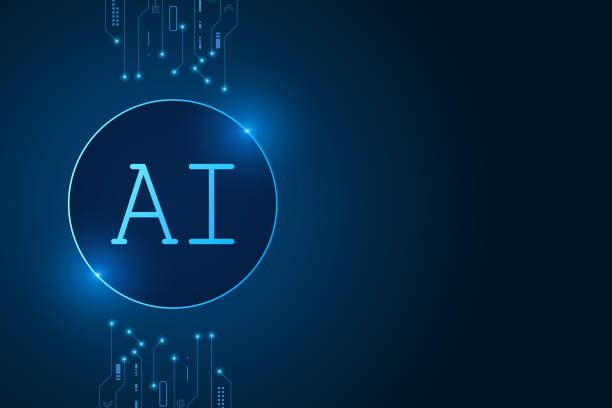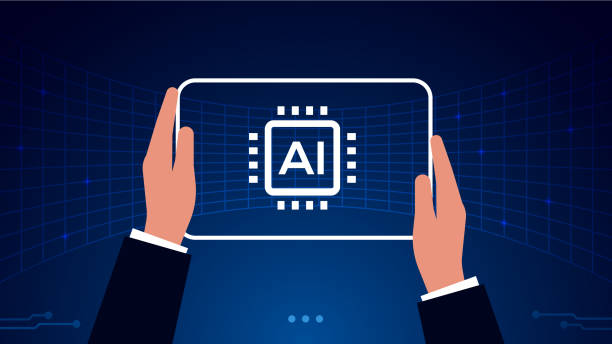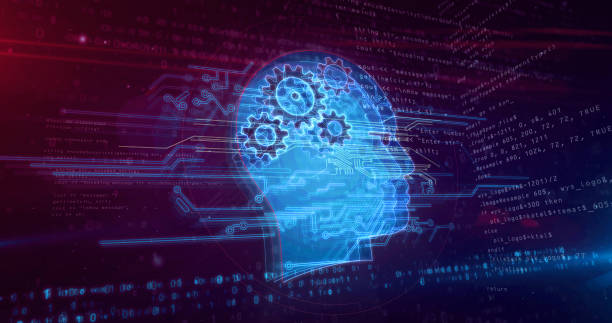Introduction to On-Page SEO and Its Importance
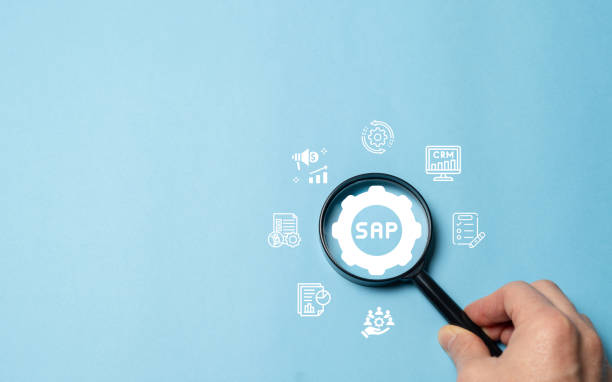
In today’s competitive web world, content visibility is more important than ever.
#On_Page_SEO, also known as on-page optimization, is a set of techniques and strategies directly applied to the content and code of a web page to improve its ranking in search engine results.
This educational and specialized approach, unlike off-page SEO which deals with link building and off-site activities, focuses entirely on factors you have full control over.
These factors include optimizing page titles, meta descriptions, URL structure, text content, images, and internal links.
The importance of this type of optimization stems from the fact that search engines like Google, with the help of their complex algorithms, scan and understand page content to provide the most relevant results to users.
Therefore, strong and correct on-page SEO helps search engines better identify the main topic of your page and, as a result, display it for relevant keywords.
This not only helps increase your site’s organic traffic but also ensures that visitors who come to your site find content that precisely matches what they were looking for from the very beginning.
This type of on-page SEO is a solid foundation for any successful SEO strategy, and without it, even the strongest off-page SEO strategies cannot achieve desired results.
Are you concerned about your e-commerce site’s low conversion rate and not achieving your desired sales?
Rasaweb is your specialized solution for having a successful e-commerce website.
✅ Significant increase in conversion rate and sales
✅ Professional and user-friendly design to attract customer satisfaction
⚡ Ready for a transformation in online sales? Get a free consultation!
Key Elements of On-Page SEO: Title and Meta Descriptions
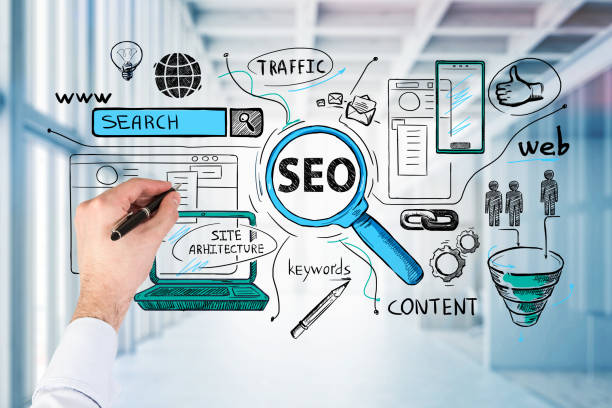
After a general familiarity with the concept of on-page SEO, it’s time to delve into its most important elements: Title Tag and Meta Description.
These two elements are the first things users see on the Search Engine Results Page (SERP) and play a vital role in attracting clicks and increasing conversion rates.
The title tag is the title displayed in the browser’s top bar and in search results.
Optimizing it involves using primary keywords at the beginning of the title, keeping it short and engaging (usually less than 60 characters), and ensuring it is unique for each page.
A strong and engaging title can even act as question-provoking content and encourage users to click.
The meta description is a short and pleasant summary of your page’s content that appears below the title in search results.
Although it does not directly affect ranking, it has a significant impact on Click-Through Rate (CTR).
A good meta description should include keywords, a Call to Action, and be enticing to encourage the user to visit your site.
Its standard length is between 150 and 160 characters.
Ignoring these two vital elements can mean losing countless opportunities to attract traffic.
Therefore, for each page of your site, carefully and precisely optimize the title tag and meta description to utilize the maximum potential of your on-page SEO.
This is a very important guidance step on the path to improving your site’s visibility.
Content Optimization and Keyword Research in On-Page SEO

Content is king; this statement holds true more than ever in the world of SEO, especially in the discussion of on-page SEO or internal SEO.
Producing high-quality, valuable, and unique content is the backbone of any successful optimization strategy.
But merely producing content is not enough; it must be optimized to be well understood by search engines.
This optimization begins with keyword research.
Keyword research is an analytical process that helps you identify the words and phrases your target audience searches for on Google to find information related to your business or content.
After identifying keywords, you should naturally and logically incorporate them into your content.
This includes using keywords in titles, subheadings (H2, H3), the first paragraph, the main body of the text, and at the end of the content.
Additionally, using synonymous keywords (LSI Keywords) and related phrases also helps search engines better understand the topic of your page.
Producing long, comprehensive, and in-depth content that covers all aspects of a topic can serve as question-provoking content and fully cover users’ information needs.
Finally, text readability and proper content structuring (using lists, short paragraphs, bolding) also impact user experience and, consequently, on-page SEO.
Types of Content and Their Use in On-Page SEO
| Type of Content | Main Goal | Example |
|---|---|---|
| Educational Content | Providing knowledge and skills | Step-by-step On-Page SEO Guide, Programming Tutorials |
| Explanatory Content | Explaining complex concepts | What is SEO?, How does Blockchain work? |
| News Content | Informing about events | Latest Google Algorithm Changes, Tech News |
| Analytical Content | In-depth analysis | Cryptocurrency Market Analysis, Digital Marketing Campaign Performance Review |
| Entertaining Content | Attracting users with engaging content | 10 Funny SEO Mistakes, Interesting Facts About the Internet |
URL Structure and Internal Linking in On-Page Optimization

After content, URL structure and internal linking are two other crucial factors in the on-page SEO strategy.
A good and optimized URL is understandable and readable for both search engines and users.
Short, meaningful URLs containing primary keywords not only help search engines better understand the page’s topic but also assure users that they are being directed to a relevant page.
Avoid numbers, unnecessary special characters, and extra words in your URL, and use hyphens (-) to separate words.
Internal linking is also one of the most powerful on-page SEO tools that is often overlooked.
By linking related pages within your website, you can help search engines better discover and understand your site’s structure.
This also distributes ranking power (Link Equity) across your site and helps deeper, less visible pages rise in search results.
Internal links also improve user experience, as they allow users to easily navigate your site and discover more relevant content.
When creating internal links, always use descriptive and keyword-rich anchor texts.
This signals to search engines what the linked page is about.
Overall, a smart strategy for URLs and internal links can significantly impact the overall performance of your website’s on-page SEO.
This is a key guidance for improving the credibility and accessibility of your content.
Are you losing business opportunities because of an outdated website? With Rasaweb, permanently solve the problem of not attracting potential customers through your website!
✅ Attract more high-quality leads
✅ Increase brand credibility in the eyes of customers
⚡ Get a free consultation for corporate website design now!
Image Optimization for On-Page SEO and Loading Speed

Images are an integral part of user experience and visual content on websites.
However, if not optimized correctly, they can harm site loading speed and consequently negatively impact on-page SEO.
Optimizing images for search engines involves several key steps that help you both benefit from the visual advantages of images and maintain your site’s speed.
The first step is image compression.
Using compression tools without losing quality reduces file sizes and significantly improves page loading time.
The second important step is using Alt Text.
Alt Text is a short and precise description of the image content that is displayed if the image fails to load for any reason.
Also, for search engines, Alt Text provides a way to understand the image content and its relation to the page text.
Be sure to naturally include relevant keywords in your Alt Text.
Furthermore, using descriptive image file names (like seo-dakheli-image.jpg instead of IMG001.jpg) and choosing the appropriate format (such as WebP for the web) are also highly important.
Image optimization not only helps improve your ranking in image search results but also generally increases your site speed, which is a significant ranking factor in on-page SEO.
This is an explanatory and crucial aspect of optimization that should not be overlooked.
Technical Aspects of On-Page SEO: Site Speed and Mobile-Friendliness
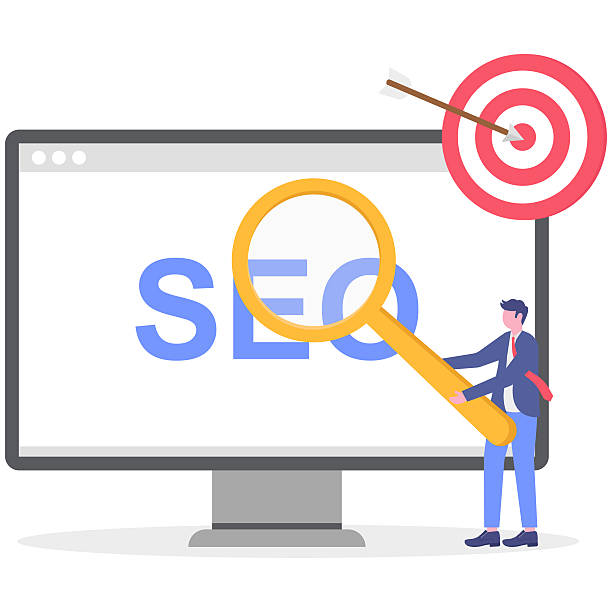
So far, we have focused on the content and visual elements of on-page SEO, but technical aspects also play a vital role in the success of your optimization strategy.
Site loading speed and mobile-friendliness are two main factors that directly impact user experience and, consequently, your site’s ranking in search engines.
Google has repeatedly emphasized that site speed is an important ranking factor.
A site that loads quickly not only provides a better user experience but also has a lower bounce rate, and users are more inclined to stay and explore it.
To improve site speed, you can use techniques such as compressing images and code (CSS, JavaScript), using a CDN (Content Delivery Network), caching, and server optimization.
In addition to speed, mobile-friendliness is also crucial today.
Given the significant increase in mobile device usage for internet access, Google has adopted a Mobile-First Indexing policy, meaning that your site’s mobile version is the primary priority for crawling and indexing by Google.
Your website must be fully responsive, meaning it displays correctly on any screen size.
Ensure that buttons and links are easily clickable, fonts are readable, and content is viewable without needing to zoom.
Ignoring these technical aspects can render even the best on-page optimization strategies ineffective.
This is a technical guide to ensuring the sustainability of your SEO.
User Experience (UX) and Core Web Vitals in On-Page SEO
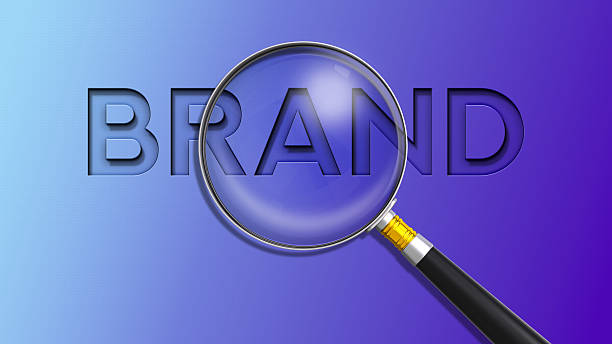
User Experience (UX) and Core Web Vitals metrics introduced by Google are crucial factors in on-page SEO and page ranking.
Google is increasingly emphasizing the quality of user experience on websites, and Core Web Vitals is a set of specific metrics to measure this experience.
These metrics include LCP (Largest Contentful Paint), which measures the loading speed of the largest content element on the page; FID (First Input Delay), which indicates the site’s responsiveness to the user’s first interaction; and CLS (Cumulative Layout Shift), which checks the visual stability of the page.
Improving these metrics directly leads to an improved user experience.
A site that loads quickly (good LCP), responds quickly to user interactions (good FID), and has no sudden layout shifts (good CLS) not only keeps users satisfied but also sends positive signals to search engines.
This is an analytical aspect of optimization that requires careful examination.
An excellent user experience leads to increased user time on site, reduced bounce rate, and higher conversion rates, all of which are indirect but very important factors in on-page SEO.
Attractive visual design, easy navigation, readable and interactive content, and providing a clear path for the user from entry to a specific action (such as purchase or registration) all contribute to improving UX and, consequently, Core Web Vitals.
Therefore, in addition to keyword and structure optimization, focusing on user experience as a core element in the on-page SEO strategy is essential.
Core Web Vitals Metrics and Their Importance
| Metric | Description | Desired Limit (Good) |
|---|---|---|
| LCP (Largest Contentful Paint) | Time to load the largest content element on the page | Less than 2.5 seconds |
| FID (First Input Delay) | Site responsiveness to the user’s first interaction | Less than 100 milliseconds |
| CLS (Cumulative Layout Shift) | Visual stability of the page and absence of sudden element shifts | Less than 0.1 |
Monitoring and Analysis of On-Page SEO: Key Tools and Metrics

After implementing on-page SEO strategies, the next stage is continuous monitoring and analysis of performance.
Without precise data and statistics, you cannot be sure of the effectiveness of your efforts or identify and improve weaknesses.
Various tools are available for this purpose, each providing valuable data.
Google Search Console is one of the most vital tools that helps you view your site’s performance in Google search results.
This tool provides information about the keywords your site is visible for, crawl errors, internal and external links, and the indexing status of pages.
Another essential tool for deeper analysis of user behavior is Google Analytics.
This tool provides data such as the number of visitors, time spent on site, bounce rate, user navigation paths on the site, and traffic sources.
By combining Search Console and Analytics data, you can get a comprehensive view of your on-page SEO performance.
Key metrics to pay attention to include: organic traffic, Click-Through Rate (CTR), keyword rankings, bounce rate, and time on page.
Additionally, regularly checking Core Web Vitals reports in Search Console to ensure a proper user experience is crucial.
This news-like and continuous process of data collection and analysis allows you to adjust and continuously improve your on-page optimization strategy.
Does your current website convert visitors into customers, or does it drive them away? Solve this problem forever with professional corporate website design by Rasaweb!
✅ Build strong credibility and branding
✅ Attract target customers and increase sales
⚡ Get a free consultation now!
Common Mistakes and Best Practices in On-Page SEO
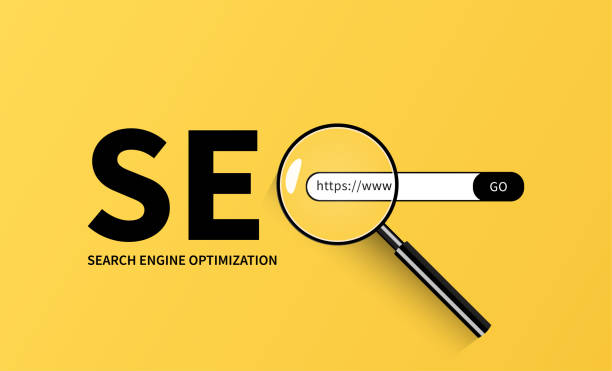
In the process of implementing on-page SEO, many people make common mistakes that can render their efforts ineffective.
Understanding these mistakes and being aware of best practices is the key to success in this area.
One of the biggest mistakes is over-stuffing content with keywords (Keyword Stuffing).
This not only gets penalized by Google but also severely degrades the user experience.
Instead, incorporate keywords naturally and logically into your text.
Another mistake is ignoring duplicate content.
Even if content is repeated across different pages of your site, it can harm your ranking.
Use the Canonical tag to indicate the original version of the content to Google.
Also, lack of image optimization, as previously mentioned, and broken links can also hurt your SEO.
Regularly check your site for broken links and fix them.
Best practices in on-page optimization include producing valuable and specialized content, correct use of title tags and meta descriptions, optimizing URL structure, implementing strong and strategic internal linking, and ensuring high loading speed and full mobile compatibility.
Also, always pay special attention to User Experience (UX) and try to provide entertaining yet useful content.
By observing these points, you can significantly improve your site’s on-page SEO performance and achieve a better position in search results.
This is an educational and crucial guide for preventing issues.
The Future of On-Page SEO and Advanced Strategies
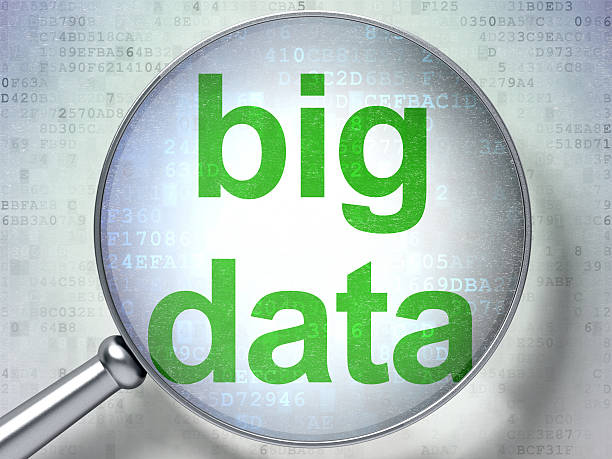
The world of SEO is constantly changing and evolving, and on-page SEO is no exception.
To stay competitive, you need to be familiar with advanced trends and strategies and incorporate them into your plan.
One of the most important future trends is the increasing importance of Artificial Intelligence and Machine Learning in Google’s algorithms.
This means that content should be optimized not just for keywords, but for user search intent.
A deeper understanding of what users are truly looking for and providing content that fully meets their needs will be crucial.
Multimedia content such as videos, podcasts, and infographics will also play a more prominent role in on-page SEO.
Optimizing this type of content (e.g., using transcripts for videos and Alt Text for infographics) will become increasingly important for increased visibility in search engines.
Optimizing for Voice Search SEO is another area that needs attention.
Users employ longer and more natural phrases in voice search; therefore, your content should be designed to answer these types of queries.
Finally, E-A-T (Expertise, Authoritativeness, Trustworthiness) will continue to be an important factor.
Google seeks content from reputable and highly knowledgeable sources.
Therefore, producing specialized content and building credibility for yourself and your website is essential for future success in on-page optimization.
This is an explanatory note for long-term planning.
Frequently Asked Questions
| Number | Question | Answer |
|---|---|---|
| 1 | What is On-Page SEO? | On-page SEO refers to a set of actions performed within a website to optimize its pages to achieve a better ranking in search results. |
| 2 | What is the most important factor in On-Page SEO? | High-quality, relevant, and comprehensive content that addresses user needs is the most important factor in on-page SEO. |
| 3 | What role does the Title Tag play in On-Page SEO? | The title tag is one of the most important factors that tells search engines and users what the page content is about. It should include the main keyword and be engaging. |
| 4 | How important is the Meta Description tag? | Although it does not directly affect ranking, it is very effective on the Click-Through Rate (CTR) in search results and encourages users to visit the page. |
| 5 | How is image optimization done in On-Page SEO? | By using appropriate alt tags, compressing image size to increase loading speed, and meaningfully naming the image file. |
| 6 | What is the importance of using headings (H1, H2, H3) in On-Page SEO? | Headings help structure content, increase readability, and assist search engines in understanding the hierarchy and sub-topics of the content. |
| 7 | What does Internal Linking mean and what are its benefits? | Internal linking means creating links between different pages of a website. This helps distribute authority, improve user navigation, and assist search engine crawling. |
| 8 | Where should the Focus Keyword be placed on the page? | The main keyword should be placed in the title tag, meta description, H1, the first paragraph, and naturally throughout the text and, if possible, in the URL. |
| 9 | What effect does copied or duplicate content have on On-Page SEO? | Duplicate content can harm site ranking and confuse search engines about which version is original, and they might even detect it as spam. |
| 10 | How important is page loading speed in On-Page SEO? | Page loading speed is an important ranking factor and directly affects user experience. Slow pages lead to an increased user bounce rate. |
And other services of Rasaweb Advertising Agency in the field of advertising
Smart UI/UX: Designed for businesses seeking digital branding through key page optimization.
Smart Social Media: An innovative service for increasing user engagement through SEO-driven content strategy.
Smart Custom Software: A combination of creativity and technology to increase sales through intelligent data analysis.
Smart Brand Identity: A professional solution for analyzing customer behavior with a focus on marketing automation.
Smart Link Building: A creative platform for improving customer behavior analysis using real data.
And more than hundreds of other services in the field of internet advertising, advertising consulting, and organizational solutions
Internet Advertising | Advertising Strategy | Advertorial
Resources
Digikala Mag Internal SEO Guide
Iran Digital Internal SEO Article
Internal SEO on HamyarSite
Internal SEO Techniques on Modirfa
? Transform your business in the digital world with Rasaweb Afarin! From powerful SEO to multilingual website design, we offer comprehensive solutions for your growth and visibility.
📍 Tehran, Mirdamad Street, next to Bank Markazi, Kazeroon Janubi Alley, Ramin Alley, No. 6


